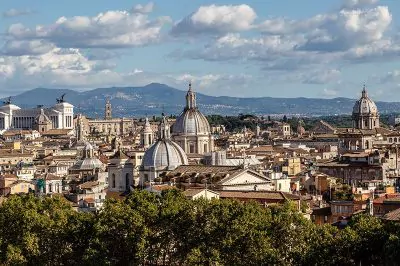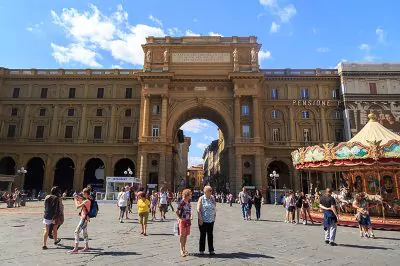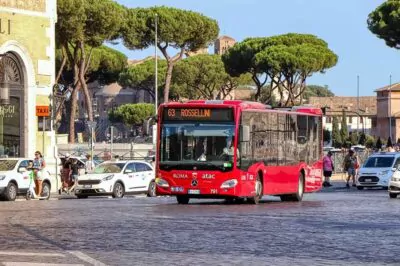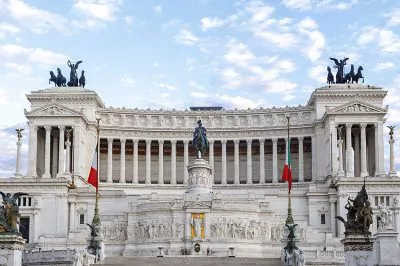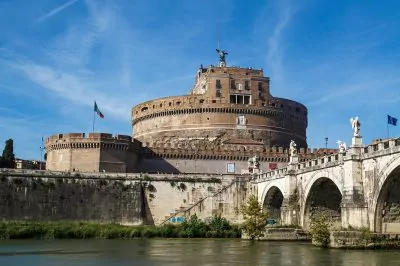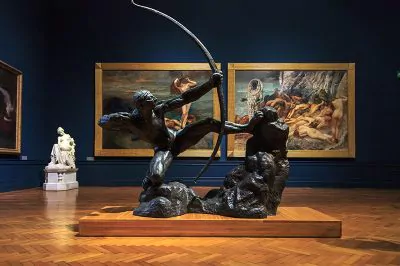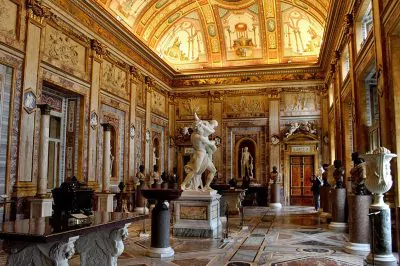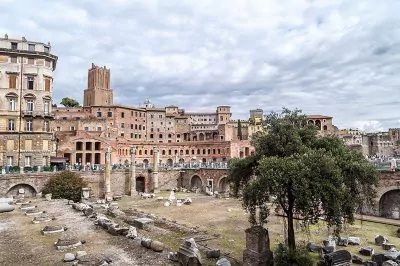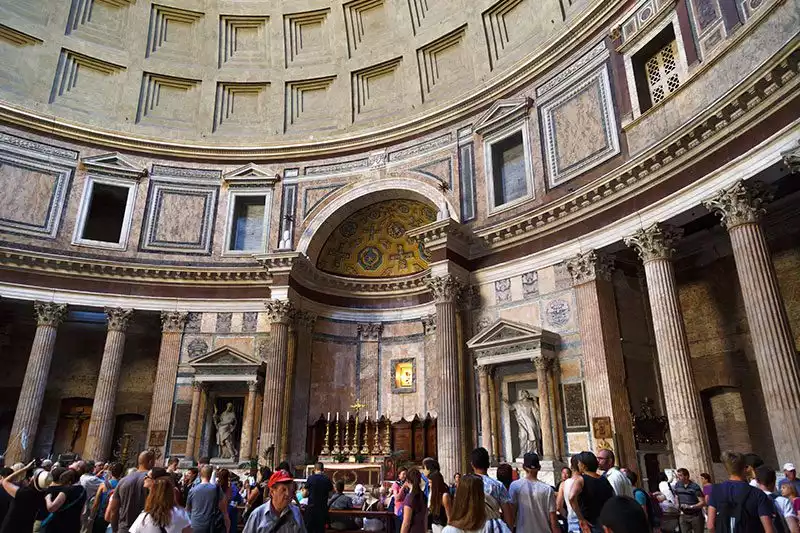
Pantheon Temple: Oldest Building in Rome
One of the oldest preserved buildings in Rome is the Pantheon. The Pantheon, which has been spreading its majesty around with its large dome since ancient times, was built in 125 AD.
The Pantheon, which was built for all the gods in ancient Rome, was consecrated and turned into a church in later periods and various additions were made in connection with the church. The building seen today is the third one built in the same place. The previous structures were damaged by fires and rebuilt by Emperor Hadrian.
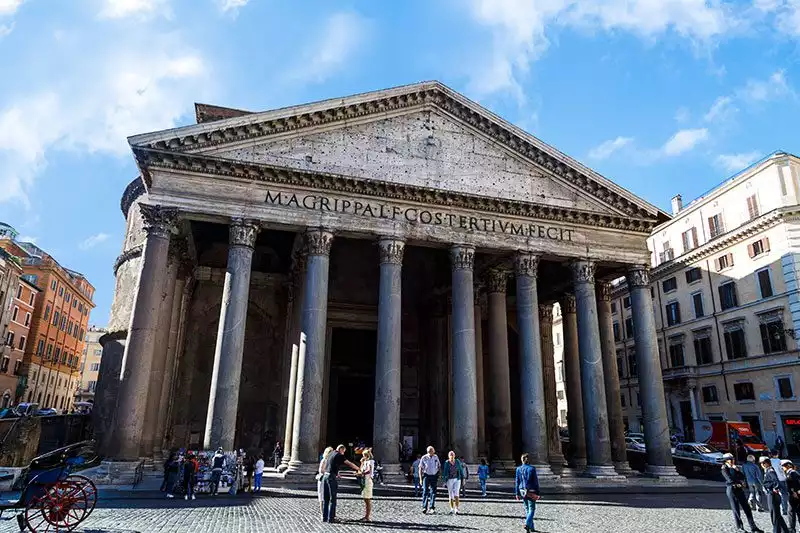
The most interesting part of the building is the 43.3 meter diameter dome. The height of the building was built to be 43.3 meters like the diameter of the dome. In order to prevent the dome from collapsing, concrete that lightens upwards was used during the construction phase.
In the middle of the dome, there is an 8-meter-wide hole called Oculus, which is the only source of light that enters inside. The sunlight that can only enter through this hole is enough to illuminate the Pantheon as it is.
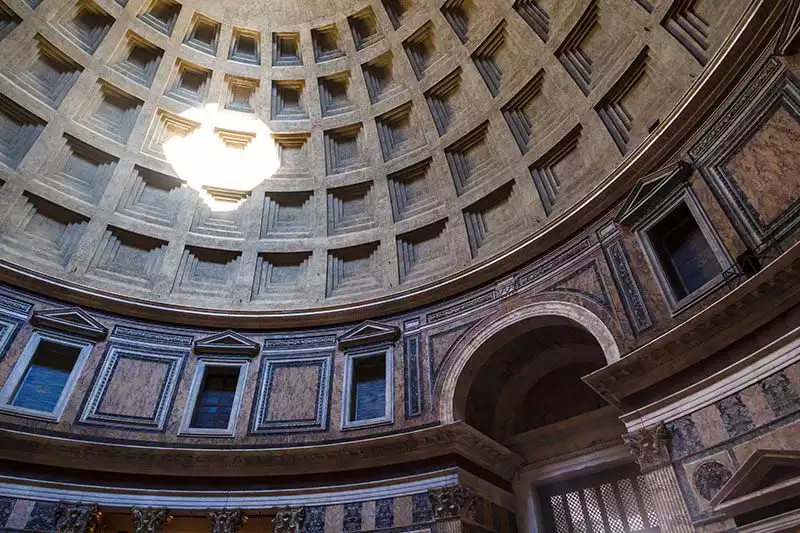

The word Pantheon was originally used for monuments where famous people were buried. The Pantheon we visited has also undertaken such a mission.
The Pantheon is where many famous people are buried, including painters, architects and kings. Raffaello, the master of art, Vittorio Emanuele II, the king of Italy, and Umberto I, the husband of the 19th century queen Margherita, are buried here.
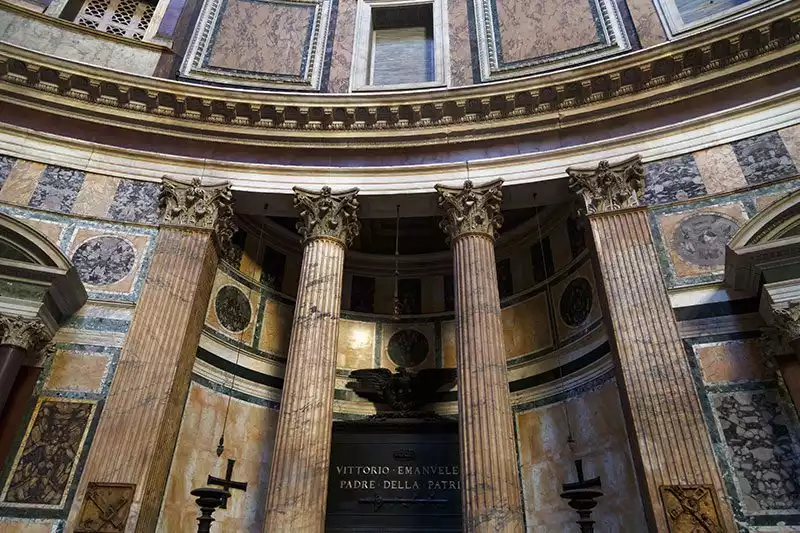
The Pantheon is located in Piazza della Rotonda. When you enter the square, it is impossible not to see this big building. It can be quite crowded in front of it from time to time. Because the Pantheon accepts visitors and it is free of charge.
When we visited the Pantheon, we were able to move step by step like a penguin to get inside. When you look up as you enter the Pantheon, you see the Latin inscription M-AGRIPPA-L-F-COS-TERTIVM-FECIT on the stone above the columns. It means “This was built by Marcus Agrippa, who was elected consul for the third time.”
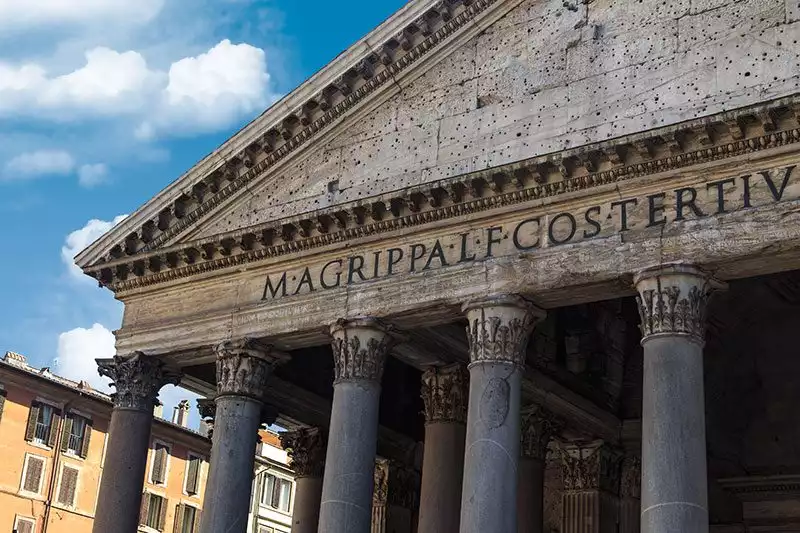
When you enter through the giant bronze door, the inside is spacious, so you are not cramped as you were when you entered. In the middle of Rotonda Square, where the Pantheon is located, there is a fountain designed by Giacomo Della Porta and sculpted by Leonardo Sormani.
Built in 1575, the fountain was renovated in 1711 and took its current form. However, in 1886 the original sculptures were removed to the Roman Museum and a replica was placed in the square.
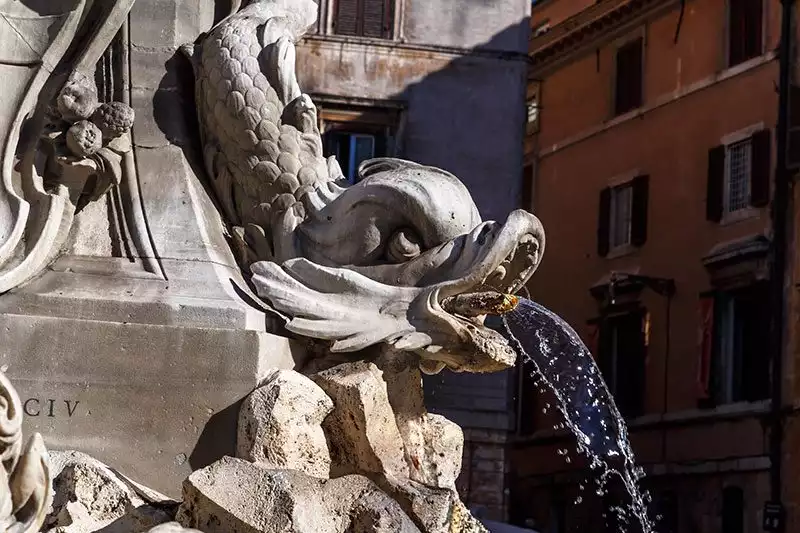

The Pantheon has also been the subject of famous painters. At the same time, the drawings that can give an idea of how the buildings were in the period of the painters are important works in this respect. Italian painter Giovanni Paolo Pannini’s Interior of the Pantheon, painted in 1734, is one of them.
The Pantheon was one of the most famous places to visit at the time, and some people would come to pray. The 128x99cm painting, which shows the interior in a better way by drawing with a wider perspective than it is, is exhibited today at the National Gallery of Art in Rome.
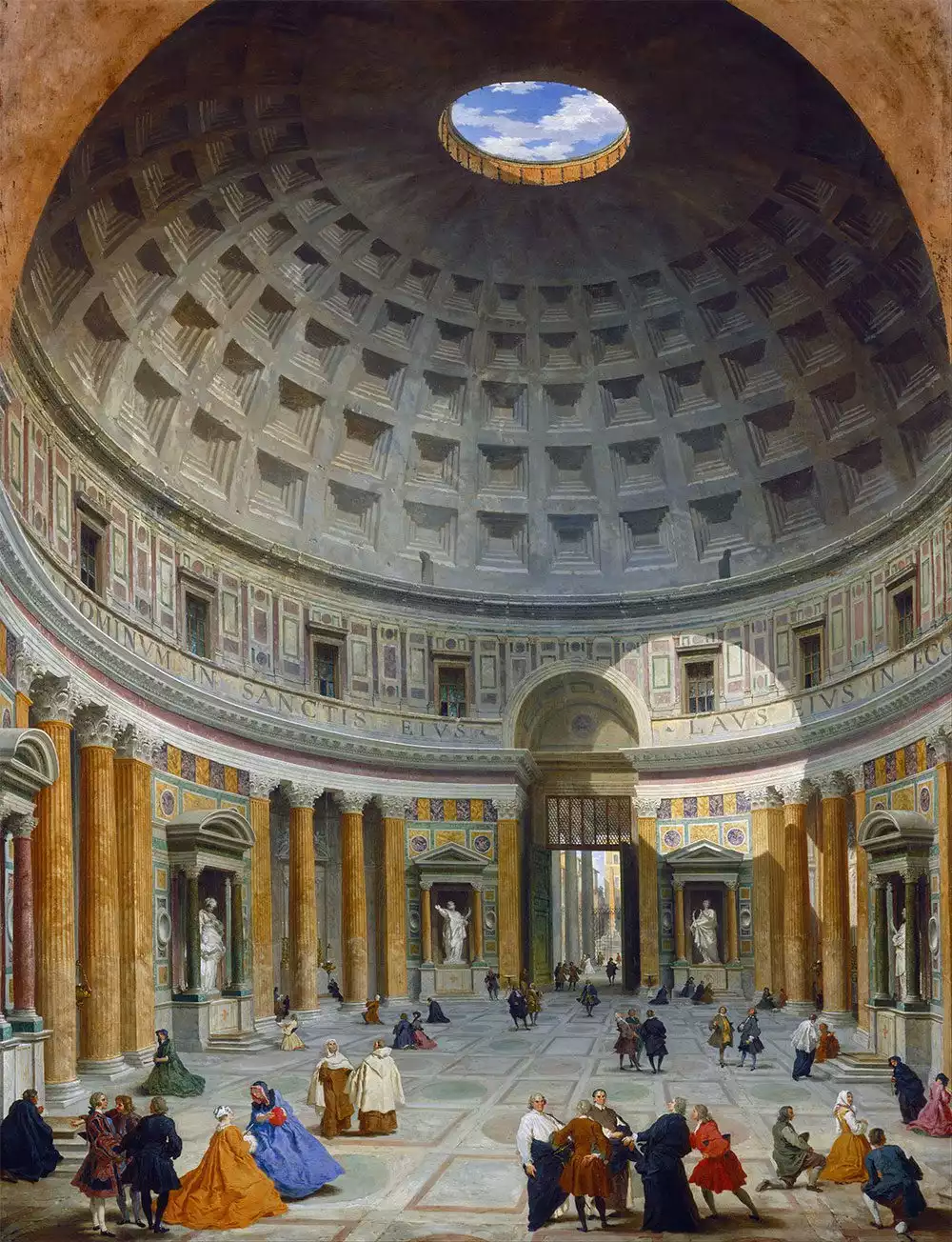
You can spend half an hour in this magnificent structure, which should be among the top items on your list of places to visit in Rome. Visiting hours are 09:00 – 18:00 on Sundays and 08:30 – 19:30 on weekdays.
